10 Ship Design Mistakes to Avoid
10Like a butterfly
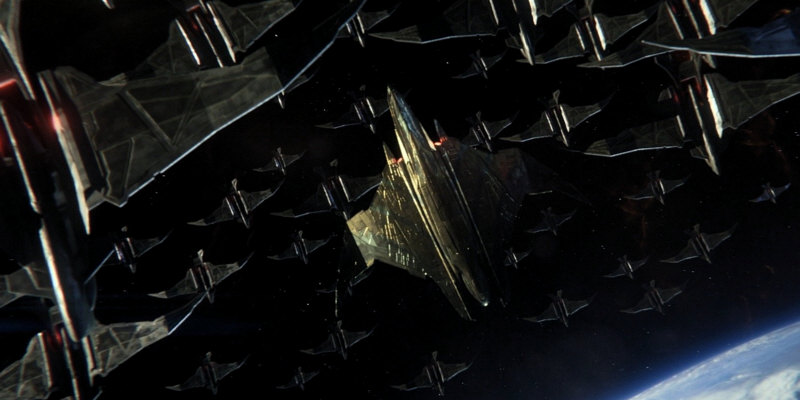
Some ship designs in recent series take their inspiration from real-life airplanes, rather than from space vehicles. An "aerodynamic" body looks cool and elements such as jet/impulse engines make sense. Large paper-thin wings, on the other hand, is not exactly what a spacecraft would need.
9Pimp my space ride!
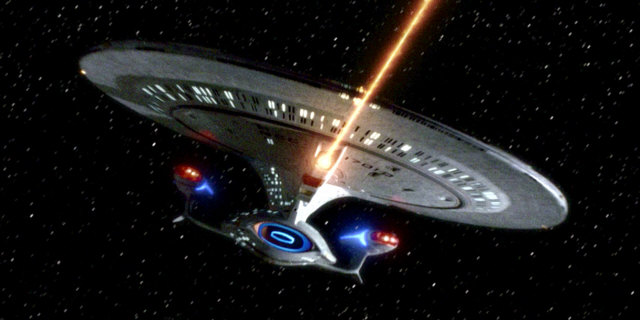
In VOY: "Extreme Risk", it was meant more like a joke that Tom Paris suggested to add fins without purpose to the Delta Flyer. Yet, a few ships that actually (could) exist in-universe, beginning with the "All Good Things" Enterprise-D, are designed with so many add-ons that they look like space dragsters. At least, the graceful lines of the Enterprise-D were ruined with a real-world reason, to allow a visual distinction of the future ship.
8Behold - you are outspiked!
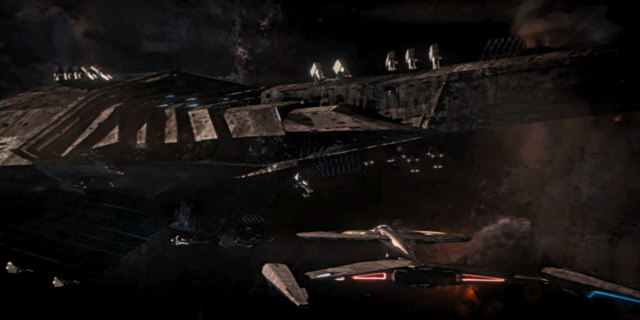
The hulls of Star Trek's ships are often smooth, and weapons are concealed and/or not immediately recognizable as such. Yet, in order to evoke a battleship bristling with guns, more recent enemy vessels such as the Scimitar, the Narada, the Sarcophagus ship, the Charon, the Viridian, the Shrike or the Borg ship from "The Last Generation" are not only unreasonably big but also customarily adorned by all kinds of spikes and other pointy details so they look really mean.
7When will I see you again?
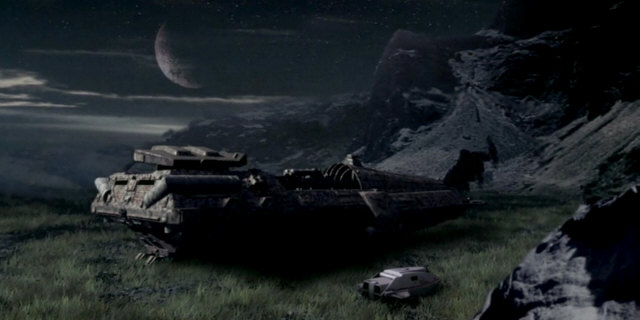
It's been a long road, getting from the 24th century Delta Quadrant to the 22nd century Alpha Quadrant. Designs such as the "hammerhead" freighter or the Akritirian patrol ship appear just everywhere and any time. And maybe not only because of budget limitations but also because the people in charge are fond of them? Just like they love the Antares class?
6I like to move it, move it!
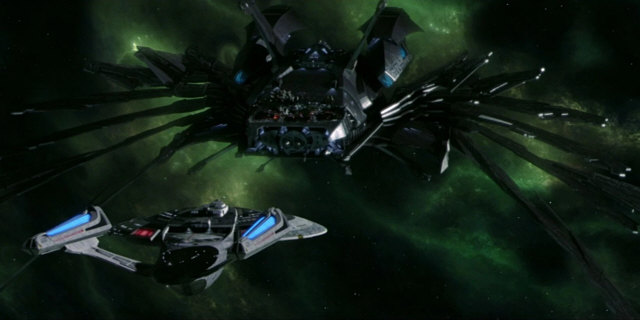
Star Trek's ships don't require any moving flight control surfaces to travel through space. We may make up explanations for the tilting wings of the Klingon BoP or the variable geometry nacelles of the Intrepid class. But some other designs take it too far, prime examples being the Scimitar with its incredibly complex wing unfolding sequence and the Diviner's ship from Prodigy. Some are even Transformer-like, such as Book's morphing ship.
5Frankenships are the best.
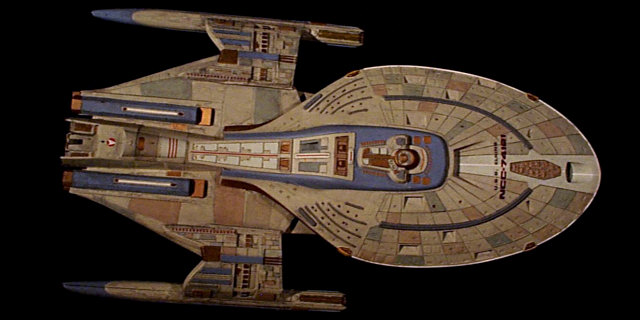
The other day at Utopia Planitia: "We've still got an Intrepid saucer hull, two Constitution nacelles, oversized runabout struts and something odd that looks like an extremely oversized F-14 Tomcat fuselage. Let me weld it all together. It'll make a formidable new ship!" - No, it will result in a defective design and an eyesore! Are we Pakleds, or what?
4Girl, you look like your mother!
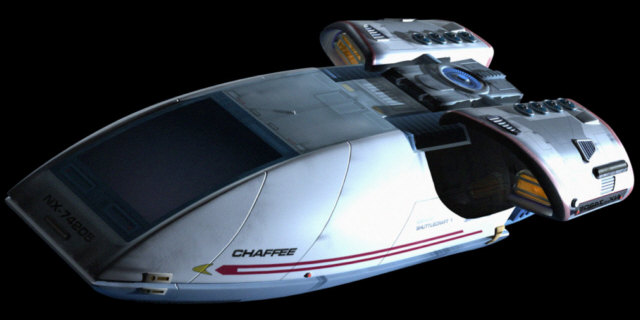
Starfleet uses standard shuttles built from standard components. At least, that's what we should expect. But the Type-7 shuttle has miniaturized nacelles of the Galaxy class. Type-8/9 shuttles have mini-Intrepid nacelles. Even the unorthodox engines of the Defiant were passed on to its auxiliary crafts for no good in-universe reason.
3Boy, how you have grown up!
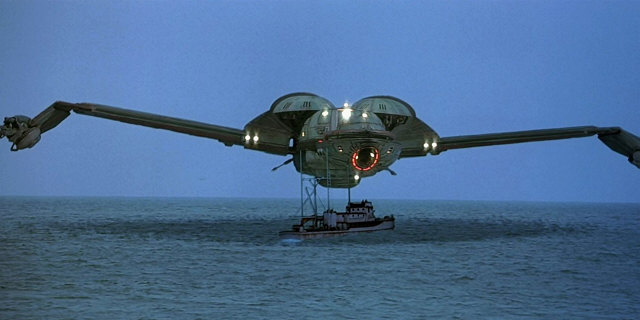
The Klingon Bird-of-Prey is 110m long. But sometimes only 50m. And occasionally over 300m. It is... uh... plot dependent. Some recurring ship types have quite a history of being scaled up or down at the whim of the writers or the VFX people. At least, there are no ships that are bigger on the inside than outside because that would be utterly ridiculous. - Oh, wait...
2One design fits all eras.
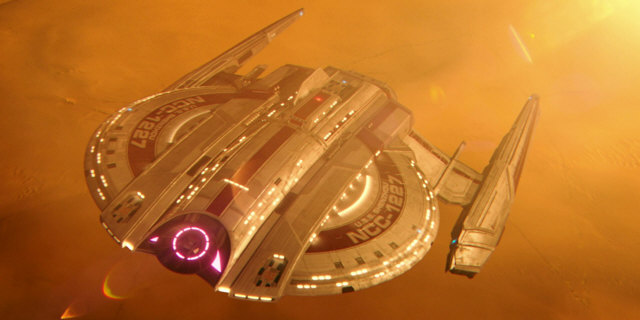
When Star Trek Enterprise was created in 2001, there were some efforts to insinuate a technical evolution from the prequel to the "present time", but not really in the field of starships. Ultimately, the 23rd century Starfleet ships in Discovery come with pure 24th century aesthetics and not those of the TOS Enterprise. The old-style metallic deflector dishes slapped on these vessels are like fig leaves.
1My ship is bigger. BIGGER!
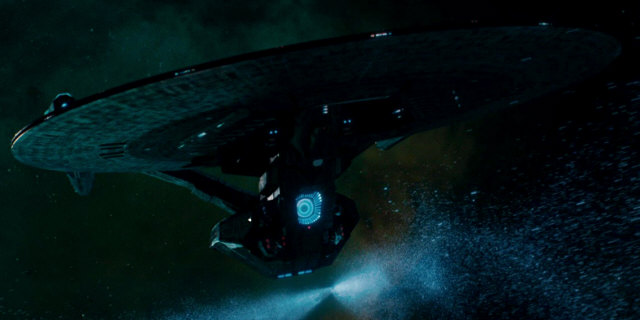
Exceptionally huge vessels have existed ever since TOS: "The Corbomite Maneuver", and this proved to be an awesome concept when the Borg entered the scene in TNG: "Q Who". But bigness has become the rule in modern Trek, for guest vessels such as the USS Vengeance, but also for regular ships. It seems like the current creators of Star Trek series are anxious to keep up with other science fiction franchises regarding the sizes of their creations.
Special AwardThe egg-laying wool-milk pig
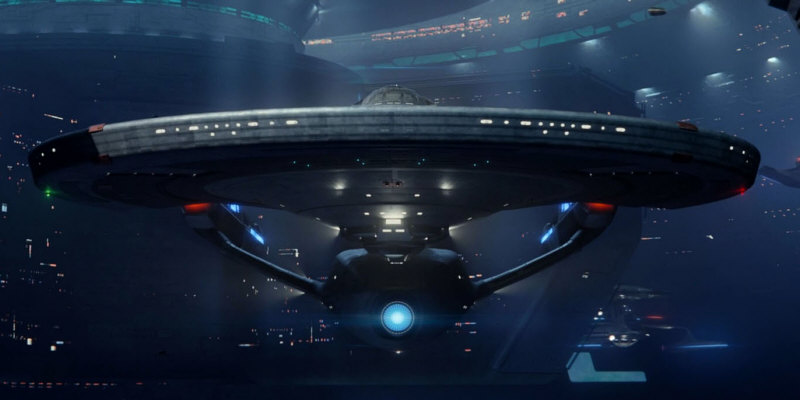
Secret recording from the Picard Art Department: "I want the hero ship to look like the TOS movie Enterprise. Because, you know, fans love Easter eggs." - "But it's the 25th century." - "I don't care, just give me the classic saucer. With phaser turrets." - "As you wish." - "And it has to be enlarged while looking the same. Because, you know, fans love it big." - "Uhm - but function shouldn't follow form. Perhaps we can add more and different windows? Please?" - "Dammit, I'm a creative person, not an engineer." - "Sure. You're the boss." - "Oh, and don't forget, our story is that this is still the same ship as Riker's old Titan. Because, you know, fans love that legacy thing." - "B-but... but... this..." - "Come on. What do you guys always call it, it's a refit, right?" - "You're a genius!" - "We'll rename it in the final episode. Because, you know, fans love the Enterprise still more." - "Sure. I love my job."
Addendum
One more mistake that should be avoided is the design of a ship without windows, docking hatches or other features that it should realistically possess (unless it was built by non-humanoid aliens).
See Also
Starship Design Guidelines - Is there such a thing as "good starship design"?














